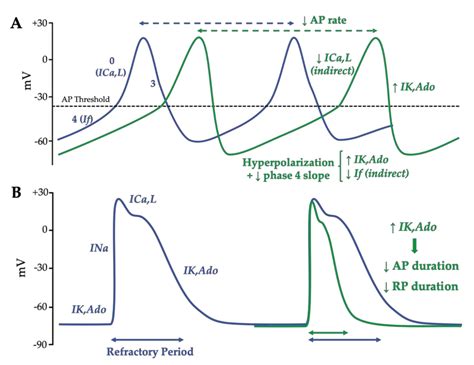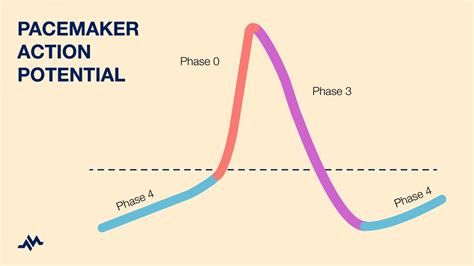na chanel in pacemaker ap | non pacemaker pulse action na chanel in pacemaker ap During depolarization, the membrane potential (Em) moves toward the equilibrium potential for Ca++, which is about +134 mV. During repolarization, g’Ca (relative Ca++ . See more We are Reddit's largest community for the discussion of replica footwear. Our subreddit is the most extensive archive of replica-related information in the world. Many of our members are highly skilled in differentiating replicas from authentic products (legit checking), for the purpose of helping others avoid scams.
0 · pacemaker node action potential
1 · pacemaker action potential
2 · non pacemaker pulse action
3 · non pacemaker cardiac cells
4 · non pacemaker action potential
5 · cardiac sodium channel na
LOCAL NUMBERS. Use the CSC TELECOM service and choose any Latvian phone number for your company. If you like, you can use CSC TELECOM services and store your current phone numbers.
pacemaker node action potential
Cells within the sinoatrial (SA) node are the primary pacemaker site within the heart. These cells are characterized as having no true resting potential, but instead generate regular, spontaneous action potentials. Unlike non-pacemaker action potentials in the heart, the depolarizing current is carried into the . See moreThe changes in membrane potential during the different phases are brought about by changes principally in the movement of Ca++ . See more
During depolarization, the membrane potential (Em) moves toward the equilibrium potential for Ca++, which is about +134 mV. During repolarization, g’Ca (relative Ca++ . See more
prada rain jacket green
Nervous and muscle cells (as well as non-pacemaker cardiac cells) use the opening of Na channels to facilitate the depolarisation phase, whereas cardiac pacemaker cells use Ca ions . The voltage-gated Na + channel Na v 1.5 initiates the cardiac action potential (AP) of the “working” myocardium, is essential for conduction of the electrical impulse, and is also .Unlike non-pacemaker action potentials in the heart, the depolarizing current is carried into the cell primarily by relatively slow Ca ++ currents instead of by fast Na + currents. There are, in fact, no fast Na + channels and currents operating in SA nodal cells.Nervous and muscle cells (as well as non-pacemaker cardiac cells) use the opening of Na channels to facilitate the depolarisation phase, whereas cardiac pacemaker cells use Ca ions in depolarisation.
The voltage-gated Na + channel Na v 1.5 initiates the cardiac action potential (AP) of the “working” myocardium, is essential for conduction of the electrical impulse, and is also known to control the AP duration .Phase 4: Slow sodium (Na⁺) channels open → Slow depolarization (called the pacemaker potential) as Na⁺ gradually enters the cell. Phase 0: Calcium (Ca²⁺) channels open → Rapid depolarization as Ca²⁺ enters the cell, leading to the action potential.
This review focuses on the role of the Na + /Ca 2+ exchanger from the early results and concepts to recent advances and attempts to give a balanced summary of the characteristics of the local, spontaneous, and rhythmic Ca 2+ releases, the molecular control of the NCX and its role in the fight-or-flight response. Many ion channels contribute to phase 4 depolarization: the K + channel current activated during the preceding action potential, a background Na + current, the sodium-calcium exchange, the I f channel, and the L- and T-type Ca 2+ channels.
Na v 1.5 channels open, within a fraction of a millisecond, at potentials more positive than −60 mV, with strong voltage dependence. Since channel density is high, they carry a large inward current, with an amplitude of >100 pA/pF.Pacemaker cells contain a series of Na + channels that allow a normal and slow influx of Na + ions that causes the membrane potential to rise slowly from an initial value of −60 mV up to about –40 mV. This is called drift. Heart primarily expresses Na V 1.5 (cardiac type), but is also reported to express the brain type Na channels, Na V 1.1, Na V 1.3, and Na V 1.6 [9, 10]. The VGSCs carry a fast inward Na current, I Na , that underlies the fast upstroke (phase 0) of AP in most cardiac cells. The main channels active in phase 4 of nodal tissue include funny channels (HCN4, I f, mixed Na + /K +) and Ca 2+ channels (T type and L type). This is in contrast to non-pacemaker cell APs, where potassium is the predominant current present during phase 4.
Unlike non-pacemaker action potentials in the heart, the depolarizing current is carried into the cell primarily by relatively slow Ca ++ currents instead of by fast Na + currents. There are, in fact, no fast Na + channels and currents operating in SA nodal cells.Nervous and muscle cells (as well as non-pacemaker cardiac cells) use the opening of Na channels to facilitate the depolarisation phase, whereas cardiac pacemaker cells use Ca ions in depolarisation.
The voltage-gated Na + channel Na v 1.5 initiates the cardiac action potential (AP) of the “working” myocardium, is essential for conduction of the electrical impulse, and is also known to control the AP duration .
Phase 4: Slow sodium (Na⁺) channels open → Slow depolarization (called the pacemaker potential) as Na⁺ gradually enters the cell. Phase 0: Calcium (Ca²⁺) channels open → Rapid depolarization as Ca²⁺ enters the cell, leading to the action potential.
This review focuses on the role of the Na + /Ca 2+ exchanger from the early results and concepts to recent advances and attempts to give a balanced summary of the characteristics of the local, spontaneous, and rhythmic Ca 2+ releases, the molecular control of the NCX and its role in the fight-or-flight response. Many ion channels contribute to phase 4 depolarization: the K + channel current activated during the preceding action potential, a background Na + current, the sodium-calcium exchange, the I f channel, and the L- and T-type Ca 2+ channels.Na v 1.5 channels open, within a fraction of a millisecond, at potentials more positive than −60 mV, with strong voltage dependence. Since channel density is high, they carry a large inward current, with an amplitude of >100 pA/pF.Pacemaker cells contain a series of Na + channels that allow a normal and slow influx of Na + ions that causes the membrane potential to rise slowly from an initial value of −60 mV up to about –40 mV. This is called drift.

Heart primarily expresses Na V 1.5 (cardiac type), but is also reported to express the brain type Na channels, Na V 1.1, Na V 1.3, and Na V 1.6 [9, 10]. The VGSCs carry a fast inward Na current, I Na , that underlies the fast upstroke (phase 0) of AP in most cardiac cells.

prada saffiano alma 25 papaya
Lursoft в сотрудничестве с CSDD обеспечивает доступ к базам данных, которые создает и содержит дирекция. Используя базу данных CSDD, Вы можете проверить: данные о регистрации транспортного средства;
na chanel in pacemaker ap|non pacemaker pulse action



























